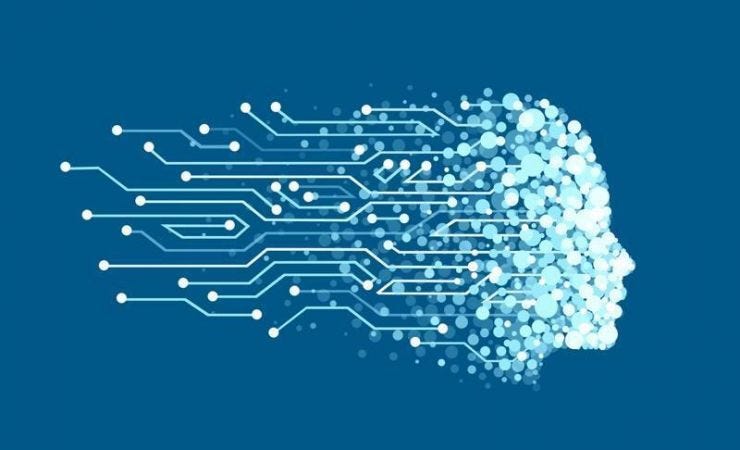Introduction to Machine Learning

Here’s an overview of what we’ll cover in this article:
- Introduction to Machine Learning
- Types of Machine Learning
- Steps in a Machine Learning Project
- Data Preprocessing
- Model Selection and Training
- Model Evaluation
- Hyperparameter Tuning
1. Introduction to Machine Learning
Machine learning is a subset of artificial intelligence that involves using algorithms to analyze and make predictions or decisions based on data. In machine learning, we train a model on a set of labeled data, and then use that model to make predictions or decisions on new, unlabeled data.
There are three main types of machine learning: supervised learning, unsupervised learning, and reinforcement learning. We’ll cover each of these in more detail in the next section.
2. Types of Machine Learning
Supervised Learning
In supervised learning, we have a labeled dataset that includes both input data and the correct output or label for each data point. We use this labeled data to train a model that can then make predictions on new, unlabeled data. Examples of supervised learning algorithms include linear regression, logistic regression, decision trees, random forests, and support vector machines (SVMs).
Unsupervised Learning
In unsupervised learning, we have an unlabeled dataset and we’re trying to find patterns or structure in the data. Unsupervised learning can be used for tasks such as clustering, dimensionality reduction, and anomaly detection. Examples of unsupervised learning algorithms include k-means clustering, hierarchical clustering, principal component analysis (PCA), and autoencoders.
Reinforcement Learning
In reinforcement learning, an agent learns to make decisions in an environment by trial and error. The agent receives rewards or penalties based on its actions, and over time it learns to take actions that maximize its rewards. Reinforcement learning can be used for tasks such as game playing, robotics, and self-driving cars.
3. Steps in a Machine Learning Project
A typical machine learning project involves several steps:
- Data collection
- Data preprocessing
- Model selection and training
- Model evaluation
- Hyperparameter tuning
Let’s dive into each of these steps in more detail.
4. Data Preprocessing
Before we can train a machine learning model, we need to preprocess our data to ensure that it’s in the right format and that it’s ready to be used for training. Data preprocessing can involve several steps, including:
- Handling missing data: If our dataset has missing values, we need to decide how to handle them. We might choose to impute the missing values using the mean or median, or we might choose to drop the rows or columns that contain missing values.
- Encoding categorical data: If our dataset has categorical variables (such as gender or occupation), we need to encode them as numerical values so that our model can use them for training.
- Scaling numerical data: If our dataset has numerical variables that are on different scales (for example, age and income), we might need to scale them so that they’re all on the same scale.
5. Model Selection and Training
Once we’ve preprocessed our data, we can move on to selecting and training a machine learning model. There are several steps involved in this process:
- Splitting the data: We typically split our dataset into a training set and a test set. We use the training set to train our model, and the test set to evaluate its performance.
- Choosing a model: Depending on the problem we’re trying to solve, we might choose a linear regression model, a decision tree model, or any other model that is appropriate for the task. 3. Training the model: We use the training set to fit the parameters of our chosen model.
- Evaluating the model: Once we’ve trained our model, we use the test set to evaluate its performance. We might use metrics such as accuracy, precision, recall, or F1 score to evaluate how well our model is performing.
6. Model Evaluation
After we’ve trained our model and evaluated its performance, we might decide that we need to make some changes. We might try different models or tweak the parameters of our existing model. We might also need to gather more data if our model isn’t performing well.
7. Hyperparameter Tuning
In addition to tweaking the parameters of our model, we might also need to tune its hyperparameters. Hyperparameters are settings that are set before training begins and control aspects such as the learning rate, regularization strength, or the number of hidden layers in a neural network. Tuning hyperparameters involves finding the optimal settings for these parameters to improve the performance of our model.
Continued Learning
If you’re interested in learning more about machine learning, there are many great resources available online. Some great places to start include online courses like Coursera or edX, or books like “A.I. & Machine Learning when you don’t know sh#t” by Lyron Foster.
Lyron Foster is a Hawai’i based African American Author, Musician, Actor, Blogger, Philanthropist and Multinational Serial Tech Entrepreneur.

